
 Traduire ce site
Traduire ce site Traducir este sitio
Traducir este sitio Diese Website übersetzen
Diese Website übersetzen Traduci questo sito
Traduci questo sito Traduzir este site
Traduzir este site Traduzir este site
Traduzir este site Deze site vertalen
Deze site vertalen Deze site vertalen
Deze site vertalen ترجمة هذا الموقع
ترجمة هذا الموقع Перевести этот сайт
Перевести этот сайт 翻译此网站
翻译此网站 このサイトを翻訳
このサイトを翻訳 이 사이트 번역
이 사이트 번역 Bu siteyi çevir
Bu siteyi çevir Översätt den här webbplatsen
Översätt den här webbplatsen Oversett denne nettsiden
Oversett denne nettsiden Käännä tämä sivusto
Käännä tämä sivusto Oversæt denne hjemmeside
Oversæt denne hjemmeside Przetłumacz tę stronę
Przetłumacz tę stronę Fordítsd le ezt a webhelyet
Fordítsd le ezt a webhelyet Přeložit tuto stránku
Přeložit tuto stránku Preložiť túto stránku
Preložiť túto stránku Traduceți acest site
Traduceți acest site Превод на този сайт
Превод на този сайт Μετάφραση αυτού του ιστότοπου
Μετάφραση αυτού του ιστότοπου Перекласти цей сайт
Перекласти цей сайт इस साइट का अनुवाद करें
इस साइट का अनुवाद करें Translate this site
Translate this site Translate this site
Translate this site Traducir este sitio
Traducir este sitio Translate this site
Translate this site ترجمة هذا الموقع
ترجمة هذا الموقع Translate this site
Translate this site ترجمة هذا الموقع
ترجمة هذا الموقع Translate this site
Translate this site Translate this site
Translate this site Translate this site
Translate this site Translate this site
Translate this site Translate this site
Translate this site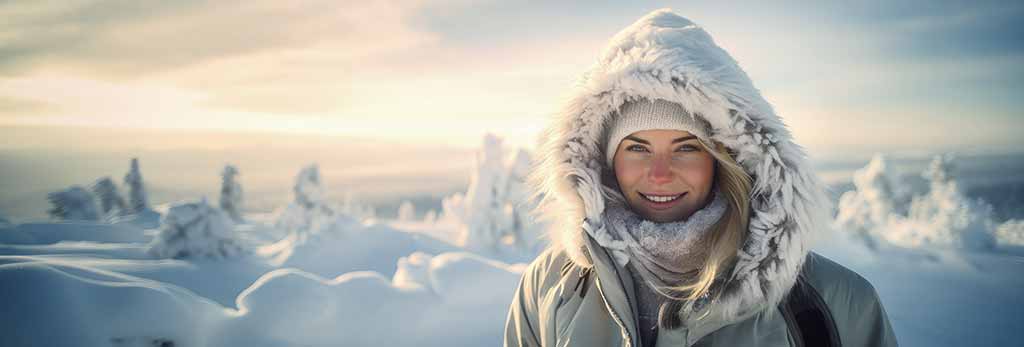
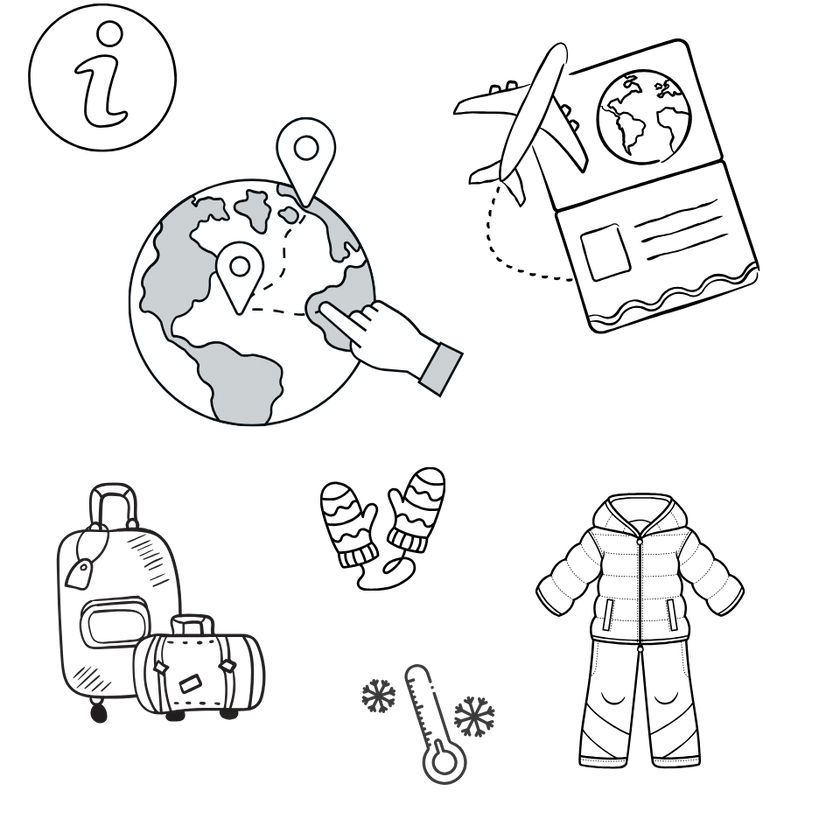
Frequently Asked Questions about your trip to Lapland
Are you planning a trip to Lapland?
Be prepared to discover Lapland, this enchanted region where nature reigns in majesty, and where cultural traditions and magical landscapes will be the ingredients of a journey that will never be forgotten.
This practical guide is designed to support you in planning your trip, answering all your essential questions.
Here are the most frequently asked questions that future travelers ask us when we plan their stay in Finnish Lapland together:
- How to dress for Lapland?
- What are the entry formalities into Lapland ?
- Can I travel with my children to Lapland? and with a baby ?
- What is the time difference in Lapland ?
- When to go to Lapland? what is the climate of Lapland ?
- Will I see the Northern Lights ?
- What currency to use in Lapland ?
- Which phone plan should I use in Lapland ?
- What are the best flights to Lapland ?
- Rent a car and drive in Lapland ?
- Do you need insurance for your trip to Lapland ?
- What is the polar night and what do we call the midnight sun ?
How to dress for Lapland?
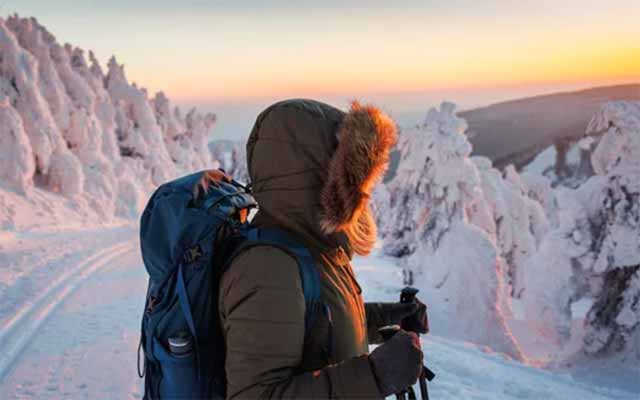
When packing for Lapland, bear in mind that winter temperatures can vary considerably, ranging from +10°C to -40°C, although they are usually between -10°C and -20°C. However, don't let the bitter cold intimidate you.
You can hire a full set of specialist cold weather gear, specially designed for Lappish conditions, on site with our help in nearby Kemijärvi. Your task is simply to bring appropriate clothing to wear under your thermal outfit.
With the right gear, the cold won't be a problem. You might even find, to your surprise, that you feel the cold more in France than you do in Lapland!
The key rule is the multi-layer technique for dressing for the extreme cold.
1. Adoptez la Technique du Multi-Couches pour vous habiller en Laponie l'hiver
La stratégie la plus efficace pour combattre le froid lapone consiste à superposer vos vêtements. Cette méthode, connue sous le nom de "multi-couches", permet une meilleure isolation.
Par exemple, vous pourriez porter :
- For the top: A thermal t-shirt, followed by a fleece sweater and a fleece vest or a light down jacket (3 layers).
- For the bottom: Breathable leggings with pants or jogging pants (2 layers only for the pants to stay comfortable).
- For the feet: A pair of thin silk socks or thermal but thin socks and on top a pair of wool socks (2 layers here too because there will be the shoes).
If you are particularly sensitive to the cold, you can consider a fourth layer but you will be a little too bundled up for activities that require to move.
2. Buy thermal underwear
To stay dry, especially during intense activities like snowmobiling or dog sledding, avoid cotton as it retains moisture.
Opt for breathable thermal underwear, like t-shirts, tights and socks, that wick away moisture. you will find this in your sports store like Decathlon or on the Internet.
Typical technical underwear that is breathable like merino wool. or any other animal hair, especially not synthetic.
3. Give priority to comfort and space for your movements
It is crucial not to wear clothes that are too tight, as they can restrict blood circulation.
In addition, the thin layers of air between your different layers of clothing also serve as insulation like in double glazing.
Make sure you are comfortable in your clothes and shoes. For shoes, choose a size larger than your usual size to ensure comfort and optimal circulation of warm air around your feet.
With these tips you will avoid buying too many clothes and having huge and almost useless suitcases full of winter clothes.
What are the formalities for entering Lapland?
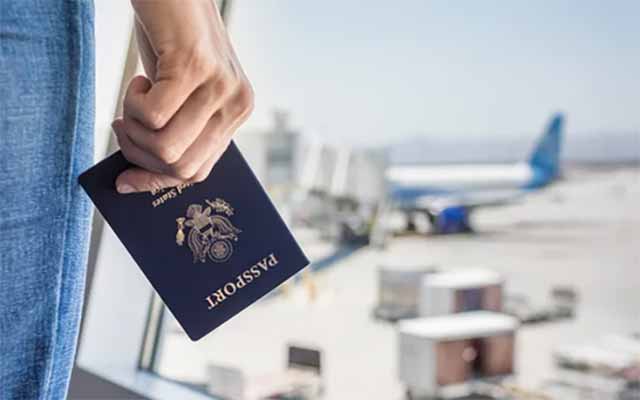
To enter Finnish Lapland, the formalities depend on your nationality and the rules in force at the time of your trip. Finnish Lapland is part of Finland, so the same entry rules apply.
Here are the key points to consider:
1. Membership of the Schengen Area
Finland is part of the Schengen area. If you are a citizen of a Schengen area member country, you can enter Finland with a valid identity card or passport.
2. Visas for Non-Schengen Members
If you are not a citizen of a Schengen area country, you may need a Schengen visa to enter Finland. Nationals of certain countries are exempt from visas for short stays (up to 90 days in a 180-day period). Check the specific requirements for your country before traveling.
3. Passport
For travelers requiring a visa, as well as those visa-exempt but not members of the Schengen area, a valid passport is required. The passport must generally be valid for at least three months after the planned date of departure from the Schengen area.
4. Travel Insurance
Travel insurance covering medical expenses and repatriation is recommended, and often mandatory to obtain a Schengen visa.
5. Proof of Financial Means and Accommodation
You may be asked to provide proof of sufficient financial means for the duration of your stay, as well as proof of accommodation (hotel reservation, letter of invitation, etc.).
6. Health Conditions and COVID-19
Depending on the health situation at the time of your trip, additional requirements related to COVID-19 (such as vaccination, testing, or quarantine) may be in place. It is important to check the latest information before traveling.
7. Customs Rules
Comply with customs rules when importing goods into Finland, particularly regarding alcohol, tobacco, and medicines.
Be sure to check the most recent and updated information before you leave, as immigration policies and requirements may change.
Children
If you plan to leave with your children or your children leave with relatives, you will need to provide the minor's identity card, the original of the authorization to leave the territory signed by an authority holder parental consent as well as a photocopy of the passport or identity card of the parent signing the authorization. This is valid for France, if you come from another region of the world, you will need to consult your regulations and probably provide a "Minor foreigner movement document".
In summary for Europeans, if Lapland seems like a distant country to you, it is not, it is in Europe, in Finland and European rules apply.
Can I travel with my children to Lapland? and with a baby ?
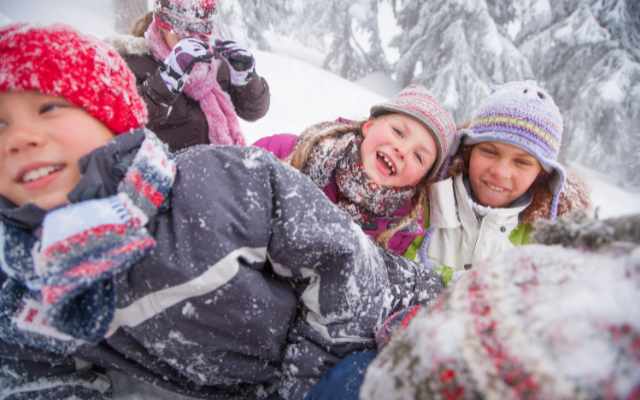
Of course, children are welcome and will be the first to be delighted to take part in such a stay, to play in the snow and take part in the activities.
To answer this question, ask yourself the same question as when going to the mountains in winter or summer with children and judge for yourself the constraints involved in traveling with children depending on their age.
Traveling to Lapland with children is a magical adventure, but it requires preparation to ensure their comfort and safety.
First of all, it is essential to ensure that children are well equipped to face the Lappish cold. This means adequate layers of clothing: thermal underwear, warm middle layers, winter coats, hats, gloves, thick socks and waterproof shoes. Layering clothing is the key to keeping them warm, without forgetting to particularly protect their extremities.
Activities should be chosen carefully, taking into account the age and interests of the children. Lapland offers many family activities, such as dog sledding, snowmobile excursions (where children can be passengers), visiting Santa's village, and even igloo building workshops. However, it is important to keep a relaxed pace. Children tire more quickly, especially in the cold, so plan days with enough breaks to rest and warm up.
For some activities that are very sporty or inaccessible to children, you can perhaps organize in the adult group so that one of the members looks after the youngest dur some outings.
Hydration and nutrition are crucial. Always take snacks and hot drinks with you when you go out. Sun protection is also important, even in winter, due to the reflection of the sun's rays off the snow. Make sure children are protected with sunscreen and sunglasses.
Finally, involve the children in planning the trip! This will increase their excitement and interest and help address fears they haven't expressed like the polar night. Let them choose a few activities or places to visit. With good preparation, a trip to Lapland with children can turn into a magical and unforgettable experience for the whole family.
We also know how to help you organize your stay taking your children into account and offer suitable activities in the accommodation. Finally, our dormitory in the old converted gymnasium will become their kingdom!
What time difference in Lapland ?
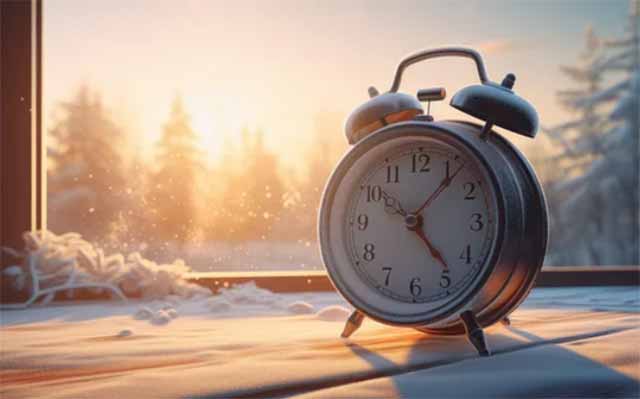
Finnish Lapland is located in the Eastern European Standard Time (EET) time zone, which is 2 hours ahead of Greenwich Mean Time (GMT+2). France, on the other hand, is in the Central European Standard Time (CET) time zone, which is 1 hour ahead of GMT (GMT+1).
As a result, Finnish Lapland has a time difference of one hour more than France. This means that when it is 12:00 p.m. in France, it is 1:00 p.m. in Finnish Lapland.
Don't forget to take into account the change to summer time and winter time, which can affect this difference. Typically, time changes occur on the same day across Europe, so the one-hour difference remains constant throughout the year.
If you come from other countries, you must also take into account the time zone of your country of origin. Here are some examples:
- Spain: +1 hour
- Germany: +1 hour
- Poland: +1 hour
- United States: varies (e.g. -7 hours for East Coast, -10 hours for West Coast)
- Japan: +7 hours
- Australia: +8h
- Canada: Toronto -7am, Winnipeg -9am, Vancouver -10am
These time differences are based on standard time, without taking into account seasonal changes such as daylight saving time.
When to go to Lapland ? What is the climate like in Lapland ?
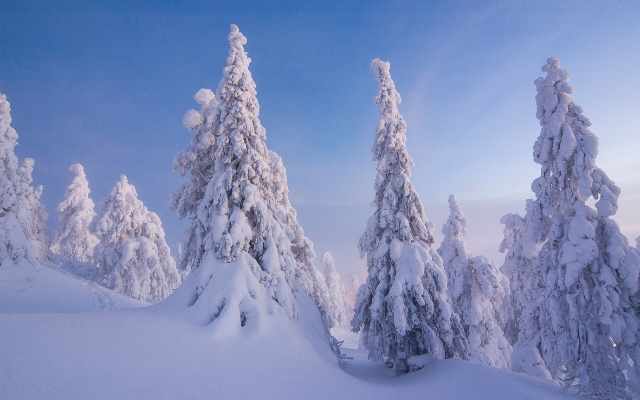
Lapland is a region located in the Far North, characterized by strong seasonal variations. Here are some key aspects of its climate :
Long and cold winters
Winter in Lapland lasts from November to March, or even longer in some areas. Temperatures can drop considerably, between -5°C and -30°C.
Snow is abundant and the ground generally remains covered in snow for several months.
It's the favorite season for Lapland aficionados. The weather is relatively dry and the night sky is fabulous.
Short and sweet summers
Summers are brief but pleasant, generally from June to August. Summer temperatures vary on average between 10°C and 15°C, sometimes reaching 20°C or more.
The days are long and sunny, and in some parts of Lapland the sun does not set for several weeks, a phenomenon known as the "midnight sun".
Summer is very pleasant for hiking in wide open spaces, forests and allows you to take advantage of the lakes for fishing, paddle boarding and even swimming.
Spring and autumn
Spring and autumn are relatively short transitional seasons in Lapland. Spring sees the melting of snow and the return of flora and fauna, while autumn is marked by vibrant colors in nature, but also by temperatures that begin to drop rapidly. These are not the best seasons to travel to Lapland.
Each season has its own charms and activities, so the best time to visit Lapland depends on your personal interests. It is clearly winter from November to March which is the favorite season for travelers for winter activities and to have a greater chance of observing the Northern Lights.
For sleepless nights, hiking and nature, summer is ideal.
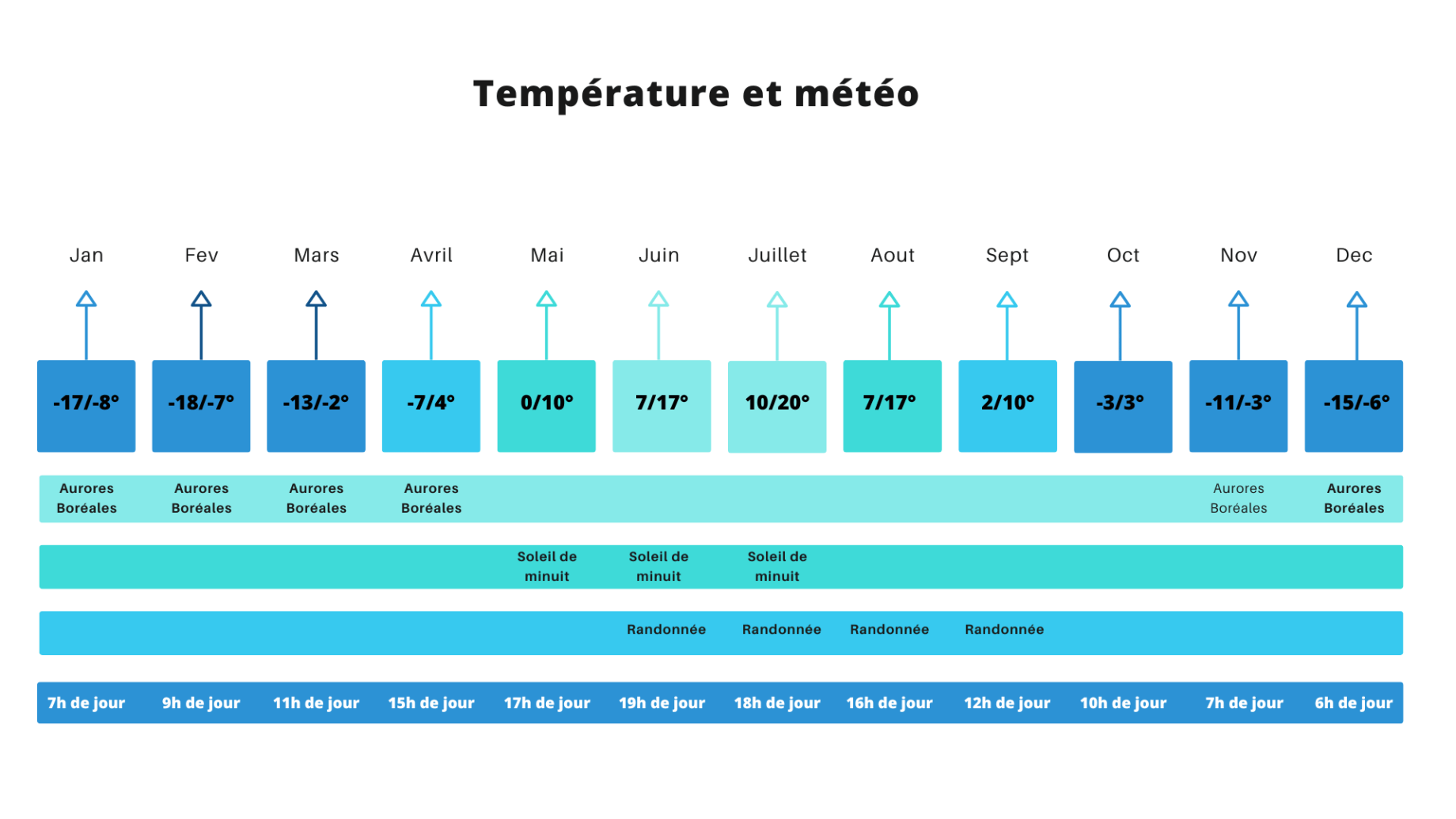
Will I see the Northern Lights?
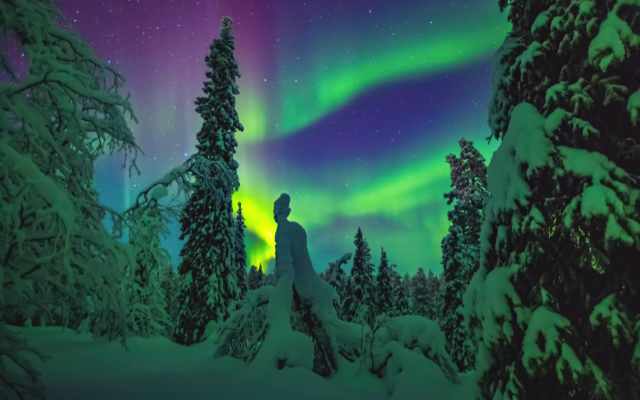
What is an aurora borealis ?
The Northern Lights are caused by interactions between charged particles emitted by the Sun (the solar wind) and the Earth's magnetic field.
When these charged particles collide with atoms and molecules in Earth's upper atmosphere, they transfer energy to atmospheric gases, primarily oxygen and nitrogen.
This energy is then released in the form of light. The different colors of the auroras are due to the different types of gases in the atmosphere and the altitude at which the collisions occur. For example, oxygen is responsible for green and reddish colors, while nitrogen produces blue and purple colors.
Conditions for observing northen lights
Observing the Northern Lights in Finnish Lapland is a unique experience but it requires certain conditions.
First of all, the ideal period extends from October to March, when the nights are long and dark enough to allow this luminous phenomenon to be seen.
A crucial element is the need for complete darkness. Our accommodation being in an isolated area, it is perfect because it is therefore recommended to get away from urban lights.
The clarity of the sky also plays a major role. Aurora are best visible on clear skies, so keeping an eye on the weather forecast is essential, hoping for a cloudless night.
Solar activity also influences the visibility of the Northern Lights. This activity varies and certain days are more favorable for the appearance of the aurora. There are forecasting services that can help anticipate the best times to observe them.<:p>
Finally, patience is a virtue in this quest. The Northern Lights do not come on command, and it is often advisable to plan several nights in the area to increase the chances of witnessing this natural spectacle.
Quelle monnaie utiliser en Laponie ?

Lapland is not an independent country, but a region that extends over the north of several Nordic countries: Norway, Sweden, Finland and a small part of Russia.
Therefore, the currency used in Lapland depends on the specific country you are in: you will pay in Norwegian crowns, Swedish crowns or euros for Finland.
Our accommodation is located in Finland which is part of Europe. The currency is therefore the Euro.
Credit and debit cards are widely accepted in Lapland (Visa, Mastercard and American Express). So you don't need to carry too much cash. But, if necessary, you can collect them at the airport or from ATMs in the town of Kemijärvi.
Quel forfait téléphonique utiliser en Laponie ?

When traveling to Lapland, the choice of phone plan depends on several factors, including your country of origin, the length of your stay, and your communication and internet data needs. Here are some general options :
Use your current plan
For EU residents, thanks to roaming regulations in the European Union, you can use your usual mobile plan at no extra cost in Finnish, Swedish or Norwegian Lapland. As we are located in Finland in Europe, so this is applicable.
Buy a local SIM card
If your current plan does not offer good roaming conditions, you can purchase a local phone SIM card, which could be a cost-effective option. In Finland, Sweden and Norway, you will find local operators offering prepaid SIM cards with different data and calling plans, such as Elisa, DNA, or Telia. These prepaid SIM cards are usually easy to purchase and recharge. They offer different options in terms of data, SMS and talk time, and can be recharged online or at various points of sale
International or global packages
Some operators offer special international plans that include data and calls in several countries, including the Nordics. Check with your operator if there is a temporary extension.
Use our Wifi!
Our accommodation offers WiFi, it's perfect for browsing, communicating via WhatsApp or even using your phone in WiFi mode for those who have WiFi compatible smartphones.
Lapland offers good coverage, except of course when you are in more isolated regions.
Quels sont les meilleurs vols vers la Laponie ?
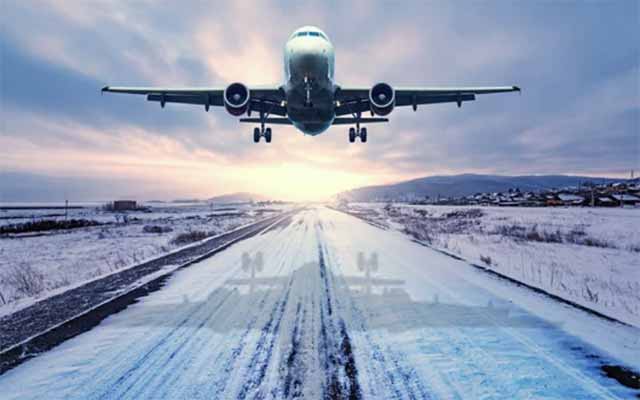
Our accommodation is located 1 hour drive from Rovaniemi Airport in Finland.
To travel from Europe to Rovaniemi, which is a popular destination in Finnish Lapland, there are several flight options, depending on your departure point and preferences.
Rovaniemi Airport is well connected, especially during the peak tourist season in winter. Here are some general tips for choosing your flights :
Direct Flights
Some major European cities offer direct flights to Rovaniemi, especially during the winter season. These cities include Helsinki, London, and sometimes Paris, Berlin, or other major cities.
Flights with Stopovers
If a direct flight is not available from your departure city, you will probably have to make a stopover, often in Helsinki, the capital of Finland. From there, several daily flights connect Helsinki to Rovaniemi.
Several airlines serve Rovaniemi, including Finnair, the Finnish national airline, and Norwegian Air. In high season, other European companies may also offer flights to Rovaniemi.
Book in advance and compare flights prices
To get the best prices, it is advisable to book your flight well in advance, especially if you are traveling during the peak season months (November to March).
There are several flight comparators such as Google Flights or try momondo by clicking below.
Transfers from the Airport
You can rent a vehicle equipped to drive in Lapland at Rovaniemi airport if you wish to be independent with your own vehicle. Book your vehicle in advance to get good prices.
But we can also agree together to pick you up at the airport and bring you back if you prefer that your guides accompany you throughout your stay. A mix of the 2 is also possible; to do this, contact us to organize your travel during your stay.
How to rent a car and drive in Lapland?
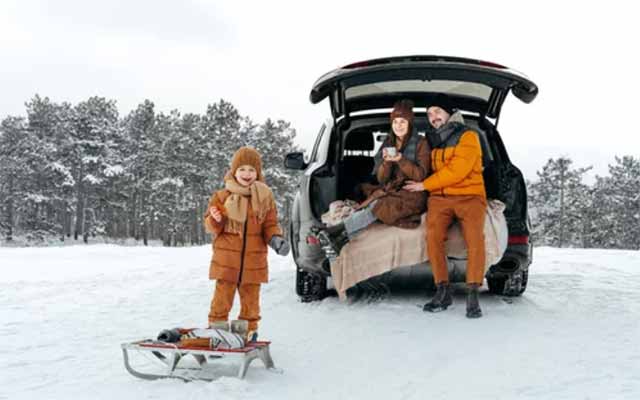
We are located in Halosenranta next to Kemijärvi, a town 1 hour's drive east of Rovaniemi Airport.
If you want to be independent, you can hire a car at Rovaniemi airport. Make sure, of course, that you have hired it well in advance of your arrival to guarantee availability.
You will be driving on snow, even if the roads are clear, rent a vehicle equipped to drive on snow.
We can also pick you up at the airport, or depending on the size of the group, make 2 vehicles including ours and a rented vehicle by yourself, which will then allow you during the stay to be autonomous or to be accompanied by your guide to go to the locations of activities.
Faut-il s'assurer pour le voyage en Laponie ?

Taking out insurance for your trip to Lapland is strongly recommended. Although not mandatory, having travel insurance can provide important peace of mind and protect against various unforeseen events.
There are often 2 components to travel insurance: health coverage and trip cancellation or interruption insurance.
Medical coverage
For refunding of treatment received during your Lapland trip, remember to bring your European Health Insurance card. This card must be requested from your social security center. It is free and personal, valid for 2 years, and must be requested for each member of the family.
Medical costs abroad can be high, especially in the event of an accident or illness requiring hospitalization. Travel insurance can cover these costs which will not be covered by your embassy on site.
There is no special vaccination required to go to Lapland. It is recommended to be up to date with your diphtheria-tetanus-polio (DTP) and measles-mumps-rubella (MMR) vaccinations.
Cancellation insurance
This second coverage allows you to be partially refunded in cases where you have to cancel your trip or shorten it. This coverage is the most expensive part of travel insurance.
If you are traveling in a group, taking into account the overall cost of your stay, this may be a valid option.
Also look at the guarantees covered by your bank card. Visa and Mastercard, in their premium version, offer travel guarantees that can sufficiently cover the risks associated with cancellation.
We strongly recommend that you take out insurance for your trip to Lapland.
What is polar night and what is the midnight sun?

The polar night and the midnight sun are two unique natural phenomena observed in the Arctic and Antarctic regions of Earth. These phenomena are due to the tilt of the Earth's axis and its rotation around the sun.
The polar night
The polar night occurs in regions beyond the Arctic or Antarctic Circle. During this phenomenon, the sun does not rise for 24 hours or more, resulting in a continuous period of night.
This period can last several days to several months, depending on the proximity of the pole. The closer we get to the pole, the longer the polar night period.
During the polar night, although the sun does not rise, it is not completely dark throughout the day. There are often a few hours of twilight which give diffused light.
The Midnight Sun
The midnight sun is the exact opposite of the polar night. This phenomenon also occurs beyond the polar circles, where the sun remains visible at local midnight.
During the summer solstice, the sun does not set for several days or weeks. This means that regions experience 24 hours of daylight.
The midnight sun provides unique opportunities for outdoor activities late at night, and it is famous for the spectacular scenery it creates.
These phenomena contribute to the uniqueness of our polar region, providing an extraordinary and unique experience for travelers. In Lapland you can experience the polar night in winter and the midnight sun in summer.
Need help organising your Lapland tour ?
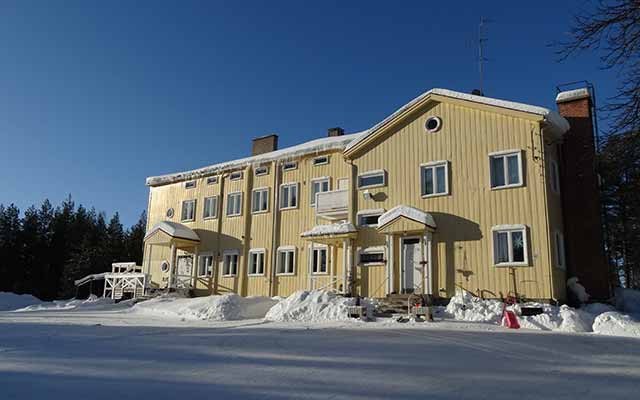
You have further questions or need help planning your trip to Lapland ?
Contact us by phone or email to help you organize your trip. We will answer all your questions.
We offer accommodation and have local contacts to organize your activities with the Sami.
Our accommodation is very economical for a family or a group of friends compared to what you can find with tour operators who often only offer hotels full of tourists.
Here, you will be in authentic Lapland and your hosts know the region well and will welcome you warmly to make your stay unforgettable. All you have to do is read your travelers' reviews to see it.
From the simple desire to discover as a couple or family, to the organization of a Team Building stay, including gifts for friends or educational trips in a school environment; we have the infrastructure allowing us to welcome you according to your needs and in the best conditions.
We can provide accommodation only : you have the premises independently; or provide accommodation and services : we take care of everything for you. As a couple, family or group: all configurations are possible and, in all cases, you are welcome with us.
Whatever your travel plan, feel free to contact us, we will be able to bring you the solution that best suited to your needs and wishes.